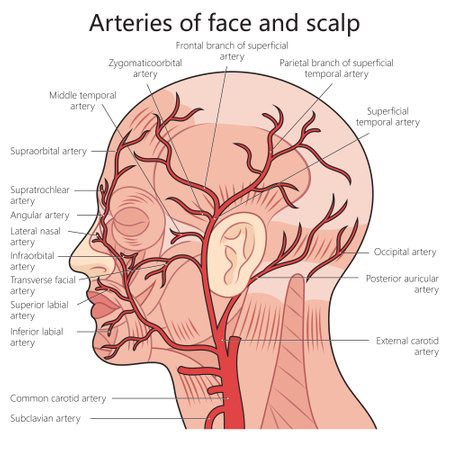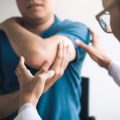Introduction to the MDT Approach in Post-Hip Fracture Care
When it comes to helping older Britons recover after a hip fracture, the Multidisciplinary Team (MDT) approach has become a cornerstone of best practice within the NHS. Hip fractures are not only physically debilitating; they can also have a profound impact on an individuals independence and quality of life. Recognising this, the British healthcare system has embraced the MDT model, which brings together professionals from diverse backgrounds—orthopaedic surgeons, geriatricians, physiotherapists, occupational therapists, nurses, social workers, and more—to ensure holistic and coordinated care. This collaborative framework is particularly significant in the UK context, where continuity of care and patient-centred planning are highly valued. The MDT’s role extends well beyond immediate surgical intervention: it covers early rehabilitation, medical optimisation, falls prevention, discharge planning, and long-term support. For older adults in Britain facing the daunting journey of post-hip fracture recovery, the MDT approach offers not just expertise from every angle but also reassurance for families and patients that no aspect of their recovery will be overlooked.
2. Key Players Within the MDT
Effective post-hip fracture care for older Britons is underpinned by the collective expertise of a multidisciplinary team (MDT), a hallmark of the NHS’s patient-centred ethos. Each professional in the MDT brings a unique skillset, ensuring that all aspects of recovery – from clinical management to social reintegration – are covered. Here’s an overview of the core roles within the team:
| Professional | Key Responsibilities |
|---|---|
| Orthopaedic Surgeon | Leads surgical intervention, oversees bone healing, and sets the foundation for rehabilitation. |
| Geriatrician | Assesses frailty, manages comorbidities, and tailors medical care to the complex needs of older adults. |
| Physiotherapist | Guides early mobilisation, designs exercise regimes, and focuses on restoring physical function. |
| Occupational Therapist | Promotes independence through adaptive strategies and home assessments to reduce future fall risks. |
| Nurse (Ward & Community) | Delivers day-to-day care, provides pain management, wound care, and acts as the first point of contact for families. |
| Social Worker | Coordinates discharge planning, links patients with community resources, and supports social wellbeing. |
The NHS Framework: Collaboration at Its Core
This blend of clinical and supportive professionals is not merely about ticking boxes; it reflects a deeply collaborative approach intrinsic to the NHS. Regular MDT meetings – often referred to as ‘ward rounds’ or ‘case conferences’ – provide a forum where each expert contributes their perspective. This ensures that care plans are comprehensive, up-to-date, and tailored to individual patient journeys. In practice, this means that an older person recovering from a hip fracture in Birmingham or Bristol benefits from both world-class surgical skills and holistic support that addresses every facet of their recovery.

3. Coordinating Care Across Settings
One of the most pivotal challenges in post-hip fracture care for older Britons is ensuring a smooth transition from the acute hospital environment to community rehabilitation and, ultimately, back home. This stage is where multidisciplinary teamwork truly comes into its own. In the NHS, discharge planning often begins soon after admission, involving not just consultants and nursing staff, but also physiotherapists, occupational therapists, and social workers. Their early collaboration ensures that each patient’s needs are carefully considered before leaving hospital.
Effective coordination hinges on seamless communication between all parties involved. It’s not uncommon for patients or their families to feel overwhelmed by the sheer number of professionals involved; thus, having a dedicated case manager or discharge coordinator can make an immense difference. They act as the linchpin, keeping everyone—from GPs to district nurses and local authority services—in the loop about the patient’s progress and ongoing requirements.
Once discharged, continuity of care must remain robust. Community-based rehabilitation teams play a vital role here, providing physiotherapy in intermediate care settings or even at home. Additionally, support from reablement services helps older people regain confidence in daily activities. It’s essential that information about medication, wound care, fall prevention strategies, and mobility plans flows freely between hospital teams and community professionals. Without this, there’s a real risk of setbacks or readmissions.
The British context brings its own nuances: family involvement is valued but not always available, so linking patients with voluntary sector organisations—such as Age UK or local befriending schemes—can provide crucial extra support. The goal is clear: to empower older adults to regain independence safely while reducing strain on both NHS resources and family carers. From my experience working alongside these teams, it’s the culture of open dialogue and mutual respect that makes the difference between a fraught discharge process and one where patients feel genuinely supported on their road to recovery.
4. Patient-Centred Care and Cultural Sensitivity
Delivering exceptional post-hip fracture care for older Britons goes beyond clinical expertise; it is fundamentally about embedding British values—dignity, independence, and respect—into every aspect of the rehabilitation journey. A patient-centred approach recognises each individual as more than just a medical case; instead, their unique life experiences, preferences, and cultural backgrounds shape their recovery pathway. In the multidisciplinary team (MDT) setting, personalised rehabilitation plans are crafted collaboratively, ensuring that older adults feel empowered and valued throughout their recovery.
The Core Values in Practice
British culture places high importance on treating older people with dignity and encouraging independence wherever possible. This ethos is evident in MDT meetings, where professionals from nursing, physiotherapy, occupational therapy, dietetics, social work, and geriatric medicine come together to discuss not only clinical progress but also personal goals and barriers. For instance, some patients may wish to return to tending their garden or participating in local community events—goals that reflect both independence and social engagement.
Tailoring Rehabilitation to Individual Needs
Personalisation requires a thorough assessment of each patient’s medical history, lifestyle preferences, living arrangements, and support networks. The MDT considers these elements to create a plan that balances safety with autonomy. For example:
| Patient Need | MDT Response | Outcome |
|---|---|---|
| Desire to live independently at home | Occupational therapist assesses home environment; adaptations recommended (e.g., grab rails) | Increased confidence and reduced risk of re-injury |
| Cultural dietary requirements | Dietetics input to ensure meal plans respect cultural/religious practices | Nutritional needs met without compromising beliefs |
| Anxiety about hospital discharge | Social worker arranges community support and liaises with family/carers | Smoother transition with emotional reassurance |
| Wish to maintain hobbies/social life | Physiotherapist sets goals relevant to desired activities (e.g., walking group participation) | Greater motivation and engagement in rehab process |
A Culturally Sensitive Approach: Real-World Reflection
Respect for diversity is integral within the NHS framework. Whether an older person grew up in rural Yorkshire or migrated from the Caribbean decades ago, MDTs take time to understand their background. This sensitivity prevents assumptions about family involvement or communication preferences. For example, some families may expect collective decision-making; others prioritise privacy. By acknowledging these nuances, care teams build trust and foster a sense of partnership that underpins effective rehabilitation.
The Impact: More than Clinical Outcomes
Ultimately, weaving British values into post-hip fracture care leads to better outcomes—not just physically but emotionally and socially. When older adults feel listened to and respected as individuals, they are more likely to engage with treatment plans, regain independence faster, and enjoy a higher quality of life during recovery. This approach exemplifies the best of British healthcare: compassionate, inclusive, and thoroughly patient-centred.
5. Challenges and Solutions in the British Context
Despite the clear benefits of the multidisciplinary team (MDT) approach to post-hip fracture care, real-world implementation across Britain is not without its hurdles. In my experience working within various NHS trusts, three main challenges frequently emerge: resource constraints, communication gaps, and fragmentation of services. These issues can compromise the consistency and quality of care older Britons receive after a hip fracture.
Resource Constraints
One of the most persistent challenges is limited resources—be it staffing, funding, or time. MDTs require input from a range of professionals such as orthopaedic surgeons, geriatricians, physiotherapists, occupational therapists, and social workers. However, many NHS hospitals struggle with shortages in these roles, leading to delays in assessment and rehabilitation planning. Additionally, community services may be stretched thin, making timely discharge and follow-up support more difficult.
Communication Gaps
Effective MDT care relies on seamless communication between acute hospital teams and community or social care providers. Yet, handover processes are often inconsistent and fragmented IT systems can hinder information sharing. It’s not uncommon for patients to feel lost in transition between settings or for crucial details about their recovery needs to be missed.
Fragmentation of Services
The divide between health and social care is another well-known challenge in the UK. Post-hip fracture patients often require both medical treatment and practical support at home, but navigating eligibility criteria and referral pathways can be confusing for families and professionals alike. Fragmented commissioning arrangements sometimes mean that responsibility for ongoing rehabilitation or home adaptations falls into grey areas.
Practical Approaches & National Initiatives
Thankfully, there are promising solutions being piloted and scaled up across Britain. On a local level, some NHS trusts have appointed dedicated Hip Fracture Coordinators who act as lynchpins between hospital teams and community services, ensuring smoother transitions of care. Many hospitals are also adopting electronic patient records accessible by all MDT members, reducing information silos.
Nationally, initiatives like the National Hip Fracture Database (NHFD) have driven quality improvement by benchmarking outcomes and highlighting best practices. The “Getting It Right First Time” (GIRFT) programme has encouraged standardisation of hip fracture pathways across England, promoting early surgery, prompt mobilisation, and joined-up rehabilitation planning. Integration pilots under the NHS Long Term Plan aim to bridge health-social care divides by fostering more collaborative commissioning and shared accountability for patient outcomes.
A Personal Perspective
From my own work on these wards, I’ve seen firsthand how perseverance in overcoming these challenges pays off—not just in better statistics but in helping older people regain confidence and independence after a life-changing injury. While systemic barriers remain, every step towards tighter MDT collaboration truly makes a difference in the lives of our ageing population.
6. Lived Experiences: Insights from the Field
The true value of the multidisciplinary team (MDT) approach in post-hip fracture care is most powerfully seen through the lived experiences of those directly involved—patients, carers, and frontline professionals across the UK. Their stories reveal not just clinical outcomes, but the emotional journey that unfolds within our NHS culture, reflecting both resilience and genuine partnership.
Patients’ Voices: Regaining Independence
Many older Britons describe their hip fracture as a life-changing event that brings uncertainty and fear. Yet, they consistently highlight the reassurance offered by the MDT—knowing that physiotherapists, occupational therapists, nurses, and consultants are working together to design a tailored recovery plan. “It wasn’t just about patching me up,” recalls Mrs. Jones from Manchester. “The physio helped me walk again, but it was the chats with my OT that gave me confidence to move back home.” The sense of being treated as a whole person rather than ‘just another patient’ is a recurring theme in these narratives.
Carers’ Perspectives: Shared Responsibility
Family members often feel overwhelmed by the sudden demands of caring for an older relative after a hip fracture. Carers report that regular communication with MDT members—particularly community nurses and social workers—makes a world of difference. Mr. Patel, whose father fractured his hip in Birmingham, shared, “We felt like we had a safety net. The team guided us through every step, from hospital discharge to setting up equipment at home.” For many carers, this collaborative spirit embodies the best of British healthcare values: mutual respect, shared responsibility, and compassion in action.
Professionals on the Ground: Collaboration in Practice
Healthcare professionals across the UK’s NHS trust settings express pride in being part of an MDT, but also acknowledge the complexities involved. Dr. Williams, a consultant orthogeriatrician in London, reflects: “We’ve learnt that communication is key—across disciplines and with families. When everyone feels heard and valued, outcomes improve dramatically.” Nurses emphasise how joint ward rounds and shared electronic notes have cut down on confusion and duplication. Physiotherapists mention how early involvement allows them to set realistic goals based on each patient’s unique context.
Emotional Resilience and Hope
Beneath the practicalities lies an emotional thread that runs through every story—the hope sparked by consistent support and encouragement. Patients talk about regaining self-esteem; carers feel less alone; professionals find renewed motivation when they see lives restored. This holistic impact is especially meaningful within the British context, where community ties and public service are deeply cherished.
Conclusion: A Culture of Care
The lived experiences from across England, Scotland, Wales and Northern Ireland showcase not just improved clinical results but also a culture of empathy, collaboration, and dignity for older people recovering from hip fractures. The MDT approach isn’t simply a framework—it’s a reflection of what makes UK healthcare truly unique: ordinary people coming together to achieve extraordinary recoveries.
7. Looking Ahead: Innovation and Best Practices
The landscape of post-hip fracture care for older adults in Britain is rapidly evolving, driven by a wave of innovation and an increasing emphasis on best practices. As someone who has worked alongside multidisciplinary teams (MDTs) on the NHS front lines, I’ve seen firsthand how embracing change can transform outcomes for our patients. Let’s explore some of the most promising trends shaping the future of MDT care.
Digital Health Tools: Bridging Gaps in Care
Digital health solutions have become more than just a convenience—they are now essential tools in MDT communication and patient monitoring. Electronic health records (EHRs) allow seamless information-sharing between GPs, orthopaedic surgeons, physios, occupational therapists, and social workers. Telehealth consultations enable timely reviews for frail patients who struggle to attend clinics, while wearable technology is making remote rehabilitation tracking a reality. These digital advances support more personalised, responsive care—helping us spot complications early and keep older Britons safe at home.
Community Partnerships: Beyond Hospital Walls
The most effective MDTs reach beyond the hospital, forging strong partnerships with community organisations. Local Age UK branches, council-run wellbeing services, and voluntary sector befriending schemes all contribute to holistic recovery plans. My experience shows that when we involve these partners from the outset—whether arranging transport for outpatient physio or setting up meal deliveries—the risk of isolation and readmission drops dramatically. Integrated community support ensures older people don’t fall through the cracks after discharge.
Government Support: Policy as a Catalyst
The UK government has recognised the cost and human toll of hip fractures among older adults. Recent funding initiatives—like the NHS Long Term Plan’s focus on out-of-hospital care—are encouraging trusts to invest in rapid-response fracture liaison services and shared decision-making models within MDTs. National audits and guidelines from NICE are also standardising best practice across regions, so postcode lottery care becomes a thing of the past.
Best Practices: What Works in Real Life?
Drawing on both national guidance and practical experience, some key best practices stand out: early mobilisation within 24 hours; comprehensive geriatric assessment by an MDT; regular medication reviews to minimise falls risk; and robust carer involvement in planning discharge home. Successful teams also hold regular “board rounds,” where every professional involved in a patient’s care has a voice—and patients themselves are encouraged to participate.
Looking Forward Together
The future of post-hip fracture care will be shaped by our willingness to collaborate across disciplines, embrace new technologies, and engage with community resources. By building on what works today and staying open to innovation, MDTs can continue to improve quality of life for older Britons recovering from hip fractures—helping them regain not just mobility, but confidence and independence too.


